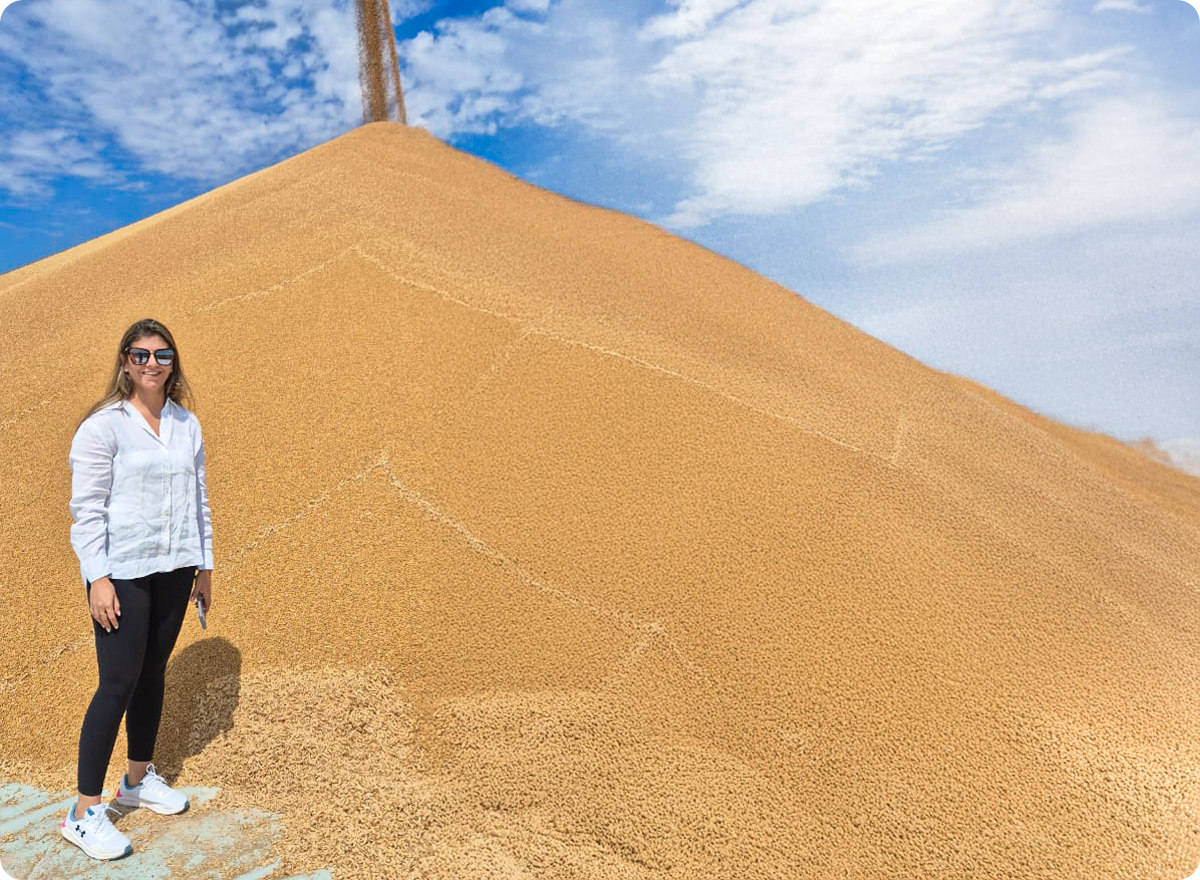September 25, 2025
India’s 2025 season tells a complex tale of weather disruptions, shifting farmer choices, policy signals and cautious market sentiment. Harsha Rai of Mayur Global sets the strategic scene for the six months ahead, when the country’s decisions on when and how much to import can redraw trade flows — overnight.



“India’s import calendar is the world’s export calendar — when India buys, the world moves.”
The kharif harvest this year has been a story of contrasts. Mung beans are showing reasonable yields, though the late rains in some regions have created issues around uniform maturity, resulting in mixed quality arrivals. For pigeon peas, sowing was timely, but weather disruptions have compromised yield potential. The decline is largely driven by excess rainfall and waterlogging in major growing regions — especially Karnataka and Maharashtra — during the critical flowering and pod-setting stages. While seeding this year was on par with last year, there was no increase, as many growers shifted acreage to maize due to more attractive prices. The actual picture will become clearer in the weeks ahead, depending on weather conditions at harvest.
Progress in the black matpe (urad) harvest has been delayed, and erratic weather — particularly rains on the standing crop at harvest time — is expected to create quality concerns this year. In terms of seeding, it is noteworthy that while urad seeding was about 1% higher than last year, the overall acreage remains nearly 25% lower than the normal area, underscoring the crop’s long-term acreage decline.
Domestic sentiment at this stage is cautious, almost defensive. Import arrivals are slowly building up, and that has naturally created pressure on prices in pigeon peas and urad. Trading volumes are steady but lack momentum, as many buyers are choosing to adopt a wait-and-watch approach rather than commit aggressively in a volatile environment.
Another factor weighing on sentiment is the financial stress carried over from last year. The market made losses across almost all major commodities, and as a result, the risk-taking capacity of traders is now close to zero. This cautiousness is further reinforced by the continuous flow of import arrivals and declining import offer prices — whether it is pigeon peas from Africa, lentils and peas from Canada or lentils and chana (chickpeas) from Australia. The combination of these factors has kept trade restrained and hesitant.
In urad, the market is clearly witnessing quality issues, and this has pushed prices even lower. However, this also suggests that later in the season we could see renewed demand for better-quality urad imports from Myanmar. Green mung beans are facing similar challenges, with quality problems reported in a few major growing areas, which has also added to the cautious tone in the market.

“What happens in Indian fields in the next six months — from pigeon pea harvest to rabi sowing of chana, wheat, and lentils — will not just shape domestic prices but ripple across global trade.”
The monsoon this year was far from uniform. In some states, surplus rains created lodging and pest issues in standing crops, which directly impacted the quality of mung beans and urad. Conversely, deficit rainfall in certain other belts constrained yield potential. This disparity is why we are seeing such variability in the crop that is now coming to market. For the rabi season, the rainfall in late September and early October has been a welcome development. These rains have provided good moisture for rabi seeding, especially in Madhya Pradesh, Uttar Pradesh, and a few other states. This replenishment has created a favorable base for chickpea and lentil sowing.
Prolonged rains could delay field preparation and sowing windows. The key takeaway is that while the uneven monsoon created challenges for kharif, the late rains have actually set the stage for a reasonable start to rabi sowing. The extent of the benefit will depend on how quickly fields dry out and how smoothly farmers are able to transition into planting after the festival season.
The next six months will be critical for India’s pulses balance, as they cover both the rabi seeding and harvest period, as well as the arrival of pigeon peas in January. Pigeon pea prices have been a key concern recently, which is why imports of yellow peas were allowed as a substitute. However, the focus is now shifting to chana, where production will need to be watched carefully. The harvest for chana will begin from late January and continue through February in the major growing states.
It’s worth noting that yellow peas accounted for almost 45% of India’s total pulse imports last year and effectively served as a substitute for both pigeon peas and chana. This means that in the coming months, import demand will revolve around the availability of pigeon peas and chana in India. If domestic production of these crops is sufficient, import requirements will ease; if not, the gap will likely be filled through imports of yellow peas and lentils. At the same time, the trade is closely monitoring developments in the overseas markets. Reports indicate good pigeon pea production in Africa, strong chana production estimates coming from Australia, and steady lentil supplies from both Canada and Australia. These international dynamics will directly shape import decisions and pricing for India.
Policy-wise, the government’s approach continues to focus on ensuring price stability — supporting farmers on one side while protecting consumers from price spikes. For traders, this makes agility and timing crucial, as import policy is likely to remain need-based and closely linked to domestic supply conditions.
When it comes to rabi pulses, all eyes are on chana — India’s staple and the crop that often sets the tone for pulse markets. Chickpeas remain the cornerstone of India’s rabi pulses basket. If weather conditions remain favorable and no major disruptions occur, we could see production at least at par with last year, with a possibility of marginal gains in acreage translating into higher output.

“The big question now is around chana. If the crop comes in strong, import needs will ease. But if there are gaps, substitution through yellow peas and lentils will return quickly and also imports for Australian chana will be seen just like last year.”
This year, the story isn’t limited to Indian fields. Australia has reported a bumper chana crop of over 2 million tons, and that has already started softening export prices there. The big question is whether India will repeat last year’s playbook, when it imported nearly 1.4 million tons of Australian chana in just four months.
So far, India hasn’t rushed into large-scale buying. But once the Australian harvest gathers pace over the next two to three months, trade flows could accelerate. If they do, we may see pressure on domestic chana prices in early 2026. If imports remain more restrained, then India’s own harvest — expected from late January through February — will carry more weight in shaping the market. In short, the direction of chana prices will be determined less by what happens in Madhya Pradesh or Rajasthan, and more by how aggressively Indian buyers step into Australian ports.
For lentils, the dynamics are quite different. Here, the government has already provided growers with a safety net: 100% procurement at the MSP of ₹6,750. On top of that, authorities are sitting on a buffer stock of around 6 lakh tonnes. For farmers, this is reassuring. The bottom line for Q1 2026: chana faces global pressure, lentils are shielded by government buying at MSP.
The outlook for the next few months is finely balanced — and it hinges on two factors: the weather and government policy. As I mentioned earlier, excess rainfall has already affected quality and, to some extent, quantity in the kharif crops. For pigeon peas in particular, the damage from waterlogging and heavy rains can only be fully measured once yields are set and the harvest begins. Until then, production estimates remain uncertain. What we do know is that recent rains have changed the production scenario significantly, making it difficult to pin down numbers at this stage. Pigeon pea harvests will therefore be the key event to watch.
Imports have been flowing continuously, especially in pigeon peas and black matpe. This has helped stabilize near-term supply but also means that domestic arrivals are competing with imported cargoes. What this really highlights is the delicate balance ahead. Weather will determine how much India produces, and government import policy will decide how that production is absorbed into the market. A misstep in either direction could create volatility — too much import flow could hurt growers, while restricted imports during a shortfall could spike consumer prices.
The coming months are less about static numbers and more about timing, management, and policy calibration. If weather stabilizes and imports are paced in a way that complements domestic arrivals, India could navigate this period smoothly. But if not, the market may experience the kind of swings we saw in the past. The next pigeon pea harvest and the rabi sowing outcome will be the real turning points for supply-demand dynamics going into early 2026.
Disclaimer: The opinions or views expressed in this publication are those of the authors or quoted persons. They do not purport to reflect the opinions or views of the Global Pulse Confederation or its members.